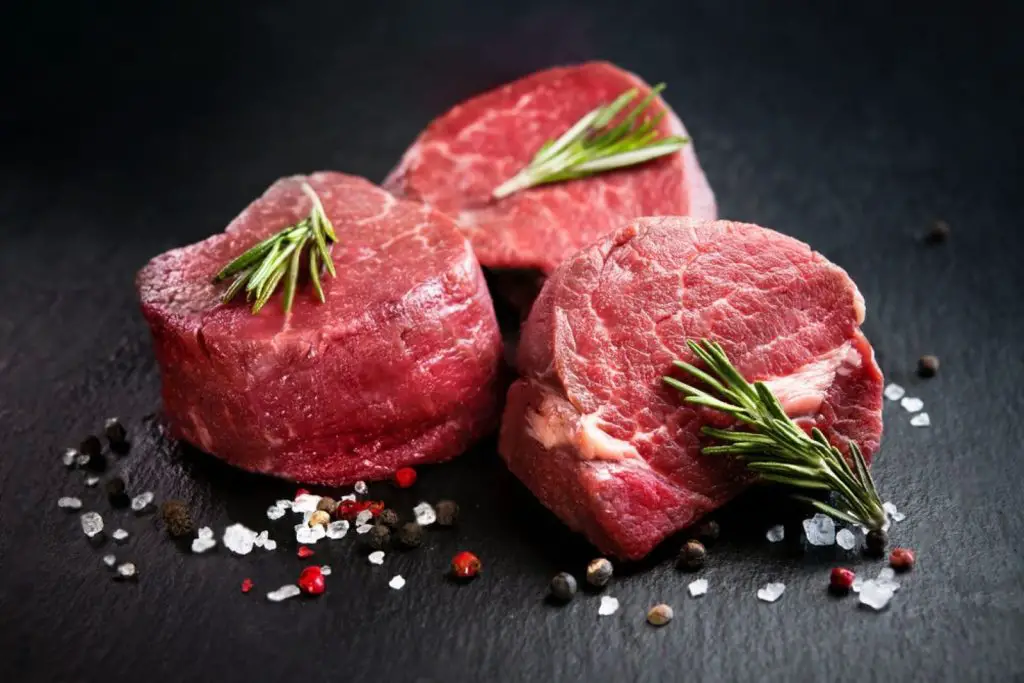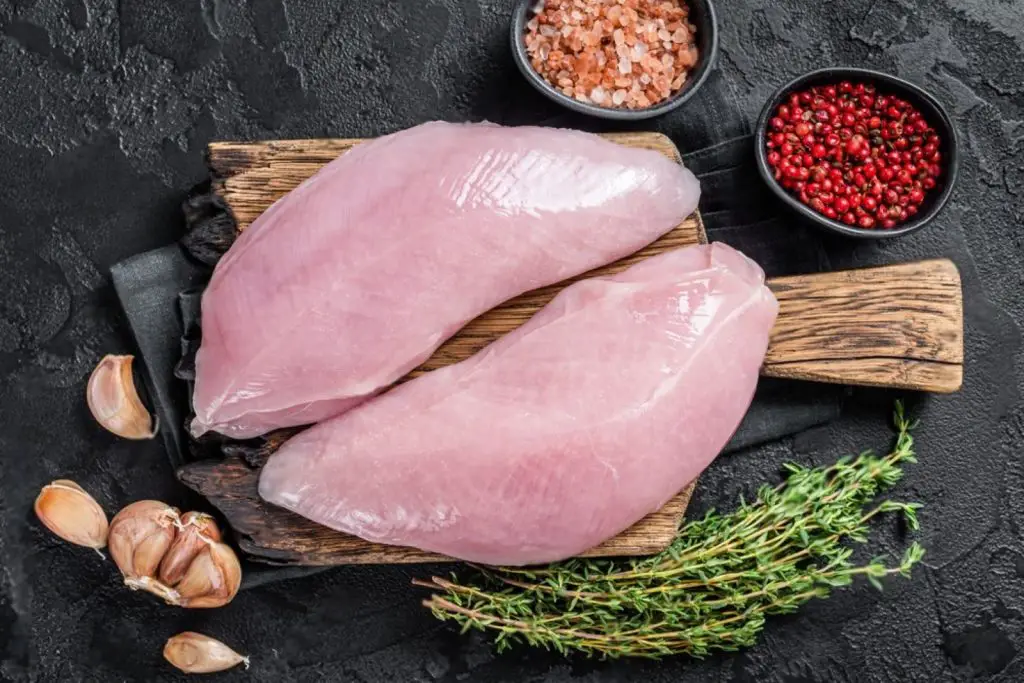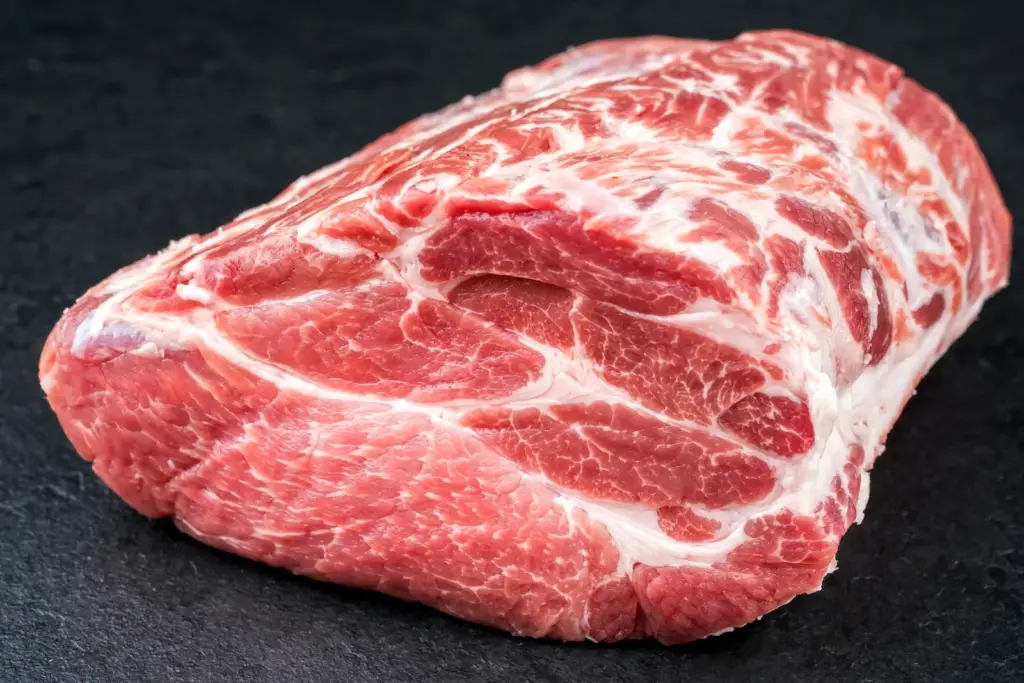
“Mutton,” a flavorful and hearty meat, has long been a favorite in cuisines around the world. This mature sheep meat boasts a distinct taste and tender texture, making it a popular choice for a variety of dishes. From traditional stews and curries to succulent roasts and kebabs, mutton’s versatility in the kitchen allows for a diverse range of culinary creations that cater to various palates. Whether slow-cooked for hours to achieve melt-in-your-mouth tenderness or marinated with aromatic spices to enhance its rich flavor, mutton has earned a reputation as a beloved meat choice among both home cooks and professional chefs. However, when purchasing mutton in larger quantities or preparing it for future meals, it may be challenging to consume it all before it reaches its peak freshness. Freezing mutton becomes a practical and efficient method to preserve its delightful taste and succulent texture, ensuring that each cut of meat retains its robust flavor and enhances your dishes with the essence of this hearty meat, even when fresh mutton is not readily available or when you wish to enjoy this flavorful protein at your convenience. In this guide, we will explore the best practices for freezing mutton, allowing you to savor its delightful taste and elevate your culinary creations with the essence of this tender and savory meat, whenever you desire, without the need for a fresh purchase or trip to the butcher. Get ready to unlock the full potential of mutton in your cooking endeavors, with perfectly frozen cuts that are ready to elevate your meals to new heights of flavor and satisfaction.
Here are the simple steps to freeze Mutton:
Step 1: Choose Fresh and High-Quality Mutton
The quality of the meat at the beginning will greatly impact its taste, texture, and overall preservation during freezing and thawing processes.
Choosing fresh mutton means looking for meat that is recently butchered and has not been sitting out for too long. Fresh mutton will have a vibrant color, usually a rich pink or red, indicating that it is still in good condition. Avoid meat that appears dull, discolored, or has a grayish tint, as these may be signs of spoilage.
Texture is also essential in assessing the quality of the mutton. High-quality mutton should have a firm texture, indicating that the muscle fibers are intact and not overly soft or mushy. The meat should not feel slimy or excessively moist, which could indicate bacterial growth or improper storage.
Checking the expiration date is crucial, as consuming expired meat can lead to health risks. Make sure to purchase mutton that is well within its use-by or sell-by date to ensure that it is safe to consume and that it will freeze well.
Quality mutton will freeze better because fresh meat retains its natural flavors and tenderness. Freezing is a process that can affect the structure of the meat cells, leading to potential changes in taste and texture. By starting with fresh and high-quality mutton, these changes can be minimized, and the meat will have a better chance of retaining its original taste and tenderness when thawed later for cooking.
Importance of being selective when choosing mutton for freezing. Opting for fresh and high-quality meat with good color, texture, and within its expiration date ensures that the frozen mutton will maintain its desired taste and tenderness, providing a better culinary experience when it’s eventually cooked and served.
Step 2: Clean and Trim the Mutton
Properly preparing the meat ensures that it is free from any contaminants and enhances its quality during the freezing process.
Cleaning the mutton is crucial to remove any surface dirt, dust, or other impurities that may have accumulated during handling or storage. Rinsing the meat under cold water is an effective and simple way to clean it. Cold water helps prevent any potential bacterial growth on the surface of the meat.
Trimming off excess fat and connective tissue is also an essential step. Excessive fat can lead to rancidity during freezing and can negatively affect the taste and texture of the meat. Additionally, trimming off visible connective tissue, which can be tough and chewy, helps to improve the overall tenderness of the mutton when it is later cooked and consumed.
By cleaning and trimming the mutton before freezing, you ensure that the meat is in its best condition and free from any unwanted substances. This not only improves the quality of the frozen meat but also contributes to better preservation and taste when it is eventually thawed and cooked.
Properly cleaned and trimmed mutton is also more visually appealing, making it more appetizing to serve when you decide to use it for cooking. Additionally, removing excess fat and connective tissue can contribute to healthier eating choices, as it reduces the overall fat content of the dish.
By preparing the mutton by cleaning it thoroughly and trimming off any unwanted fat and connective tissue. This process ensures that the frozen mutton maintains its quality and taste, making it a delicious and enjoyable ingredient for various culinary delights.
Step 3: Portion the Mutton
Focuses on the importance of portioning the mutton before freezing, which offers several practical advantages for later use and ensures a better freezing process.
Portioning the mutton involves cutting it into smaller, manageable pieces. By doing so, you create individual servings that are easier to work with when you decide to cook with the frozen meat. This way, you won’t need to thaw the entire batch if you only require a smaller amount for a specific recipe.
Cutting the mutton into chunks or slices allows you to choose the best shape for your preferred cooking methods. For example, smaller chunks are ideal for stews or curries, while thinner slices may be suitable for grilling or stir-frying. Tailoring the portions to your preferred cooking styles ensures more efficient and enjoyable meal preparation.
Smaller portions also offer the advantage of faster and more even freezing. When you freeze large, uncut pieces of mutton, the center may take longer to freeze completely. During this extended freezing time, ice crystals may form, potentially affecting the meat’s texture and taste. By portioning the mutton into smaller pieces, you promote quicker freezing, which helps preserve the meat’s quality.
Additionally, when you have smaller portions, it’s easier to defrost only what you need, reducing potential waste and ensuring that you maintain the quality of the remaining frozen mutton. You can simply take out the required portion, leaving the rest undisturbed in the freezer.
By portioning the mutton before freezing, you create a more practical and versatile supply of frozen meat. This not only enhances the overall convenience of cooking with mutton but also contributes to better preservation and quality when you eventually use it for your favorite dishes.
Step 4: Wrap the Mutton Securely
Freezer burn is a common issue that occurs when frozen food comes into contact with air. It causes the dehydration of the meat’s surface, resulting in discolored, dry, and tough spots. Properly wrapping the mutton creates a protective barrier that helps minimize air exposure, reducing the risk of freezer burn.
There are several options for wrapping the mutton securely:
- Plastic wrap: Using plastic wrap is a convenient way to wrap individual portions of mutton. Place the meat on a sheet of plastic wrap and tightly wrap it, ensuring no air is trapped inside. This tight seal prevents air from reaching the meat’s surface, reducing the likelihood of freezer burn.
- Aluminum foil: Aluminum foil is another effective option for wrapping mutton. Similar to plastic wrap, wrap each portion tightly in aluminum foil, creating a snug seal. The foil acts as a barrier against air and helps maintain the meat’s moisture and quality during freezing.
- Resealable freezer bags: If you prefer a more environmentally friendly option, resealable freezer bags can be used. Place the mutton portions inside the bags and carefully remove as much air as possible before sealing. Squeezing out excess air prevents freezer burn and keeps the meat in good condition.
Regardless of the wrapping material you choose, ensure that it forms a tight and secure seal around the mutton. This will keep the meat protected from air exposure, which is essential for maintaining its taste, texture, and overall quality when you decide to use it later.
By wrapping the mutton securely, you ensure that the frozen meat remains in excellent condition and retains its natural flavors, making it a delightful ingredient for your future cooking endeavors.
Step 5: Label the Packages
Labeling the packages containing the frozen mutton with essential information such as the contents and date. Proper labeling plays a crucial role in organizing the freezer and ensuring that the mutton is used in a timely manner.
Labeling each package with the contents is essential for easy identification. When you have multiple items stored in the freezer, it can be challenging to discern what each package contains just by looking at it. By clearly labeling the packages with “Mutton” or any specific details like “Mutton Chunks” or “Mutton Slices,” you can quickly identify the meat you need without having to open each package.
Including the date on the label is equally important. It allows you to keep track of how long the mutton has been frozen. Proper labeling helps ensure that you use the oldest packages first, following the “first-in, first-out” principle. This practice prevents the mutton from staying in the freezer for too long, helping to maintain its optimal quality and taste.
Over time, frozen food can lose its quality, such as flavor and texture, due to freezer burn or degradation of the meat’s structure. By using the oldest packages first, you reduce the risk of letting the mutton stay in the freezer for extended periods, thus preserving its quality.
Labeling is especially useful when you have a variety of frozen items in your freezer. It helps prevent confusion and potential waste by allowing you to easily identify the mutton and other frozen foods you have on hand.
Moreover, proper labeling helps you to plan your meals effectively. By knowing what you have in the freezer and when you freeze it, you can better manage your food inventory and incorporate the frozen mutton into your meal planning and cooking schedule.
By labeling each package of frozen mutton with the contents and date. Proper labeling helps with organization, ensures you use the oldest packages first, and assists in preserving the quality and taste of the mutton for your future culinary creations.
Step 6: Freeze the Mutton
When freezing the mutton, it’s essential to arrange the wrapped portions in a single layer. Placing them in a single layer ensures that each piece of meat is exposed to the cold air of the freezer, facilitating faster and more efficient freezing. If the portions were stacked or piled on top of each other, the outer layers might freeze faster than the inner ones, leading to uneven freezing and potential quality issues.
By not allowing the mutton portions to touch each other, you prevent them from sticking together as they freeze. If the portions come into contact, they might freeze together, making it difficult to separate them when you want to use a specific portion for cooking. By arranging them in a single layer and ensuring they are not touching, you maintain the individuality of each portion, making it easier to handle and use later on.
Additionally, freezing the mutton in a single layer helps maintain the meat’s shape and appearance. If portions were stacked or squeezed together during freezing, they might deform or lose their original form, affecting their appearance when thawed and cooked.
Properly freezing the mutton in a single layer also helps prevent the growth of harmful bacteria. When food freezes quickly, bacteria have less time to multiply and spoil the meat. Faster freezing helps preserve the quality and safety of the frozen mutton, ensuring it remains safe for consumption even after an extended period of freezing.
By arranging the wrapped mutton portions in a single layer in the freezer. This practice allows for faster and more even freezing, prevents the pieces from sticking together, and helps preserve the meat’s quality and shape for future use. By following this step, you ensure that the frozen mutton remains in top condition and is ready to be used in your culinary creations whenever you desire.
Step 7: Transfer to a Freezer-Safe Container
When mutton portions are individually wrapped and frozen, they are protected from immediate exposure to air and potential freezer burn. However, wrapping alone may not provide sufficient long-term protection. By transferring the wrapped portions into a freezer-safe container or resealable bag, you create an additional layer of protection against air and moisture.
Freezer-safe containers and resealable bags are specifically designed to withstand low temperatures and prevent air and moisture from seeping into the food. This ensures that the mutton remains fresh and free from freezer burn for an extended period. It also helps to preserve the meat’s natural flavors and textures, making it more enjoyable to cook and eat when thawed.
Furthermore, using containers or resealable bags helps organize the freezer space. When mutton portions are placed in a dedicated container, they are easy to stack or arrange neatly, optimizing the use of available freezer space. This organization prevents the frozen mutton from being scattered or lost in the freezer, making it easier to locate and access when needed.
Organizing the freezer space is not just about convenience; it also helps reduce food waste. When the freezer is orderly, you can easily see what ingredients you have available, preventing the accidental loss or neglect of frozen food items that might expire before use.
By transferring the frozen mutton into a freezer-safe container or resealable bag, you ensure that the meat is well-protected and organized in the freezer. This step contributes to the longevity of the mutton’s quality and taste, making it a convenient and delightful ingredient for your future cooking endeavors.
Step 8: Store in the Freezer
The recommended temperature for meat storage in the freezer is typically around 0°F (-18°C). At this temperature, the freezing process is optimized, and the growth of harmful bacteria is significantly slowed down, ensuring the long-term preservation of the mutton’s quality.
Storing the mutton at the correct temperature helps maintain its texture, taste, and nutritional value. It prevents freezer burn and keeps the meat safe for consumption over an extended period. It’s essential to periodically check and adjust the freezer’s temperature to ensure it remains at the recommended level.
Placing the frozen mutton in a dedicated section of the freezer is advisable to prevent cross-contamination and the absorption of odors from other foods. Some foods, especially those with strong odors, can transfer their flavors to nearby items in the freezer. To preserve the mutton’s natural taste, it’s best to keep it separate from other foods, especially those with strong smells, like onions or seafood.
Organizing the freezer with labeled containers or resealable bags of mutton can further contribute to efficient use of space and easy access when needed. Group similar items together, and make sure the oldest packages are placed at the front, following the “first-in, first-out” principle.
By storing the mutton in a freezer set at the recommended temperature, you ensure that the meat is well-preserved and safe to consume even after an extended period of freezing. Organizing the freezer space and keeping the mutton away from odorous foods contribute to maintaining its natural taste and quality, making it a delightful ingredient for your future culinary creations.
How long can mutton last in the freezer?
Mutton can last in the freezer for approximately 6 to 12 months when stored properly at 0°F (-18°C) or below. The precise duration depends on factors like the quality of the meat, packaging, and freezing conditions. Regularly checking the freezer temperature and using “first-in, first-out” rotation helps ensure optimal storage and consumption.
Other related questions
How do you defrost mutton?
Defrosting mutton is best done gradually and safely to preserve its quality. The recommended methods are thawing in the refrigerator, submerging the sealed package in cold water, or using the defrost setting on a microwave. Avoid thawing at room temperature to prevent bacterial growth.
Can you refreeze mutton?
Refreezing mutton is generally not recommended. When meat is thawed, harmful bacteria can multiply, and refreezing may not completely eliminate them. This process can compromise the quality and safety of the mutton. It is best to cook the thawed mutton and consume it promptly rather than refreezing.
How do I know if the mutton has gone bad after being frozen?
After being frozen, signs of spoiled mutton include off odors, discoloration (gray or greenish), and a slimy or sticky texture. If the mutton shows any of these signs, it may have gone bad and should not be consumed. Always use proper storage techniques, follow recommended freezing times, and adhere to food safety guidelines to prevent spoilage.
Is it better to freeze mutton in vacuum-sealed bags or containers?
Both vacuum-sealed bags and airtight containers are suitable for freezing mutton, and the choice depends on personal preference and available resources. Vacuum-sealed bags efficiently remove air, reducing the risk of freezer burn and preserving the meat’s quality. Airtight containers offer convenience and can be easily reused, but it’s essential to remove as much air as possible to maintain freshness. Whichever method is chosen, ensure proper sealing to prevent freezer odors from affecting the mutton.
Can I freeze mutton curry or stew for convenience?
Yes, you can freeze mutton curry or stew for convenience. Freezing cooked mutton curry or stew allows for easy meal preparation, as it can be thawed and reheated whenever needed. To freeze, let the curry or stew cool to room temperature, transfer it to airtight containers or freezer-safe bags, ensuring proper sealing, and store in the freezer to maintain its flavor and texture.
Can I freeze mutton that has been marinated with yogurt or spices?
Yes, you can freeze mutton that has been marinated with yogurt or spices. Marinating the mutton before freezing can enhance its flavor and tenderness. After marinating, transfer the mutton to airtight containers or freezer-safe bags, ensuring proper sealing, and store for up to 2-3 months in the freezer to preserve its marinated goodness.








